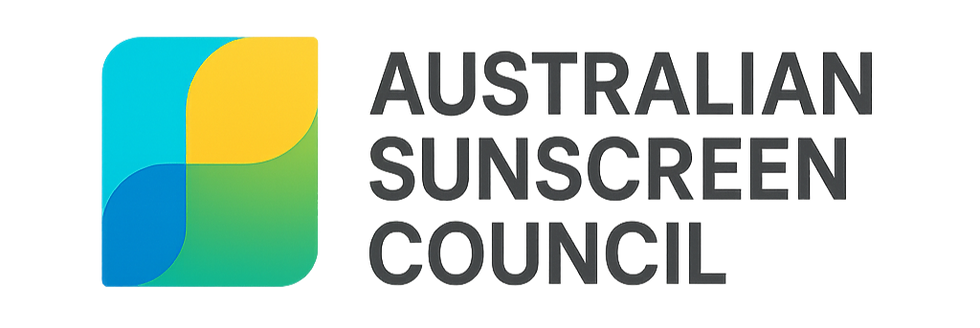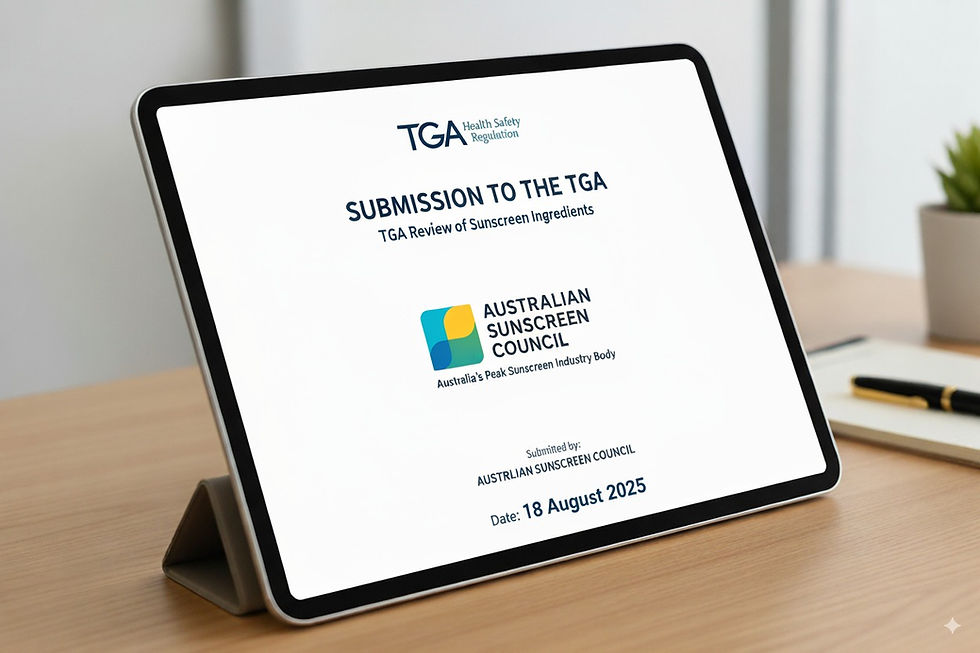The Life-Saving Millimeter: Why Professional Skin Cancer Screening Must Expand Across Australia
- Dr Abhinandan Chowdhury

- 3 days ago
- 7 min read
The Scientific Case for Universal Access to Expert Detection
Dr. Abhinandan Chowdhury provides the following analysis, grounded in the official published findings of Australia's leading cancer registries and international research consortiums.
"When we examine the survival data from over 350,000 melanoma patients, one truth becomes undeniable: detection depth determines whether a patient lives or dies. A melanoma caught at 0.5mm thickness offers a 99.6% chance of 10-year survival, while one detected at 4mm drops to barely 26% survival¹,². This is not academic theory—this represents thousands of Australian lives that hang in the balance of our screening infrastructure. Every day we delay expanding professional screening access, we condemn preventable deaths to occur."
The Depth of Detection: Where Millimeters Mean Everything
The Australian Survival Evidence
Australian registry data tracking 210,042 melanoma patients provides definitive proof that early professional detection saves lives³,⁴. The relationship between tumor thickness and survival is not gradual—it is precipitous:

The survival data reveals the critical importance of detecting melanomas at their thinnest stages. When melanomas are caught at ≤0.5mm thickness, patients achieve a remarkable 99.6% 10-year survival rate. However, as thickness increases beyond 1.0mm, survival rates plummet dramatically to just 26-61% for melanomas measuring 1.01->4.00mm in depth.
Ultra-thin melanomas (≤0.5mm): 99.6% 10-year survival rate¹
Thin melanomas (≤1.0mm): 87.5% 10-year melanoma-specific survival²
Intermediate thickness (1.01-2.0mm): 61.11% 10-year survival²
Thick melanomas (2.01-4.0mm): Survival plummets to 38.75%²
Advanced thickness (>4.0mm): Only 26% 10-year survival²
These statistics reveal the critical window of opportunity that professional screening creates. When dermatologists and trained physicians detect melanomas at their earliest stages—as they are uniquely qualified to do—patients achieve near-perfect survival outcomes¹,⁵. The difference between detection at 0.8mm versus 1.2mm can represent the difference between a 99% chance of survival and a 61.11% chance⁴.
The Detection Excellence of Medical Professionals
Large-scale Australian studies demonstrate that trained medical professionals achieve vastly superior detection rates compared to patient self-examination⁶,⁷:
Professional Detection Accuracy:
Dermatologists with dermoscopy: 85.7% melanoma detection sensitivity⁸
Experienced skin cancer doctors: 60% detection rate⁶
General practitioners: 29% detection rate⁶
Patient self-detection: Significantly lower rates, often detecting thicker lesions⁷
Critically, research following 2,452 melanoma patients found that those whose melanomas were detected during professional screening had 32% lower melanoma-specific mortality compared to patient-detected cases⁷. Professional detection consistently identifies melanomas at thinner, more treatable stages⁹,⁷.
The Screening Success Stories:
Proof of Life-Saving Impact
Rural Australia's Breakthrough Results
The 600 Nurses Project in South Australia demonstrates the transformative power of expanded professional screening¹⁰. Training primary care nurses to perform dermoscopic skin checks has yielded remarkable results across eight rural communities:
860 people screened in underserved areas
78 lesions suspicious for melanoma detected and referred for treatment
239 non-melanoma skin cancers identified for early intervention
Over 50% of participants had never received professional skin screening previously
10-15% were classified above-average risk for melanoma, representing lives saved through early intervention
This model proves that expanding professional screening capacity directly translates to lives saved, particularly in high-risk populations with limited access to dermatologists¹⁰.
International Evidence: The German Experience
Germany's SCREEN pilot project initially achieved a compelling 48% reduction in melanoma mortality through systematic screening¹¹,¹². The pilot demonstrated that professional examination could identify melanomas at significantly thinner stages, leading to dramatically improved survival outcomes. While national implementation faced challenges, the core principle remains validated: professional screening saves lives when properly executed¹².
The Technology-Enhanced Advantage
Modern screening programs incorporating dermoscopy and artificial intelligence achieve even better detection rates¹³. AI-augmented screening improved diagnostic accuracy by 11% when used by doctors and helped non-dermatologist healthcare professionals improve accuracy by 16.5%¹³. These technologies enable broader deployment of highly accurate screening while maintaining the critical human expertise component.
The Preventable Death Crisis
Australia's Deadly Delay
Australia faces an unconscionable tragedy: 1,400 melanoma deaths annually¹⁰, with one Australian dying from melanoma every six hours⁷. Yet research consistently demonstrates that professional screening can detect the vast majority of these melanomas at stages where survival approaches 100%¹,⁵.
The COVID-19 pandemic revealed the deadly consequences of delayed screening, with a 14% reduction in melanoma screening services in 2020 contributing to increased skin cancer mortality¹⁴. This natural experiment proved that screening reduction directly correlates with preventable deaths.
The Rural and Regional Emergency
Regional Australians face disproportionate melanoma risk, with 8,000 diagnoses in 2021 expected to rise to over 11,000 annually by 2030¹⁴. Research shows melanoma incidence is highest among people aged 70-79 years living in regional areas¹⁰—exactly the population with the least access to dermatologist screening.
Male Australians are twice as likely to die from melanoma compared to women, largely attributable to lower screening participation and sun safety complacency¹⁴. Professional screening programs must specifically target these high-risk demographics.
The Cost of Early Detection Versus Late Treatment
Economic Evidence for Screening
Patients with thin, low-risk melanomas consume a fraction of healthcare resources needed to treat advanced disease¹⁵. Early-stage melanoma treatment costs thousands of dollars, while metastatic melanoma treatment can exceed hundreds of thousands per patient¹⁰.
The national economic burden of melanoma is projected to reach $8.7 billion by 2030 if current detection trends continue¹⁰. Expanding professional screening represents not just moral imperative but economic necessity.
Quality of Life Preservation
Patients diagnosed with thin melanomas maintain excellent quality of life, while those diagnosed at later stages face substantial morbidity, disfigurement from extensive surgeries, and psychological trauma from poor prognosis¹⁵. Professional screening preserves not just life but life quality for thousands of Australians.
The Imperative for Screening Expansion
Immediate Healthcare System Actions Required
Universal High-Risk Screening: Healthcare systems must implement systematic professional screening for all Australians over 50, with particular focus on regional populations, males, and those with previous skin cancer history¹⁶.
Training Scale-Up: The 600 Nurses Project model should be expanded nationwide, training thousands of primary care nurses to perform dermoscopic screening in underserved areas¹⁰.
Technology Integration: All screening programs should incorporate AI-augmented dermoscopy to maximize detection accuracy while optimizing specialist referral pathways¹³.
Specialist Access Enhancement: Dermatologist access must be expanded through telemedicine, mobile screening units, and enhanced training programs to meet the detection accuracy standards that save lives⁶.
Regulatory and Policy Imperatives
Medicare Coverage Expansion: Professional skin screening should be universally covered under Medicare for all Australians over 40, with enhanced rebates for regional populations¹⁷.
Primary Care Integration: Skin screening should become a standard component of routine healthcare visits, with GPs required to perform basic skin examination or refer to qualified screeners¹⁷.
Public Health Campaigns: Massive education campaigns must emphasize that professional screening—not patient self-examination—represents the gold standard for melanoma detection⁷.
The Screening Success Formula
Research across multiple healthcare systems confirms that effective professional screening programs share common elements¹⁵,⁷:
Expert Training: Practitioners must receive comprehensive dermoscopy education and ongoing skill maintenance
Technology Enhancement: AI-augmented imaging improves detection rates across all practitioner skill levels
Systematic Approach: Screening must be systematic rather than opportunistic to achieve population-level impact
Risk Stratification: High-risk populations require more frequent and intensive screening protocols
Quality Metrics: Programs must track and report detection rates, referral accuracy, and patient outcomes
Conclusion: The Moral Imperative of Millimeters
The evidence is overwhelming and unambiguous: professional skin cancer screening saves lives by detecting melanomas at millimeter-thin stages where survival approaches 100%. Every Australian deserves access to the level of professional examination that can mean the difference between a 99% survival rate and a death sentence.
Australia's healthcare system possesses all the tools necessary—trained professionals, advanced technology, established infrastructure, and proven screening models. What we lack is the political will to scale these life-saving interventions to match the magnitude of our national skin cancer crisis.
The 1,400 Australians who will die from melanoma this year need not die. The 8,000 regional Australians diagnosed annually deserve the same survival outcomes as their metropolitan counterparts. The choice between a 99% survival rate and a 26% survival rate should never depend on geographic location, healthcare access, or socioeconomic status.
Professional skin cancer screening represents the single most powerful intervention available to reduce Australia's melanoma mortality. The time for incremental improvements has passed—we need systematic, nationwide expansion of professional screening access before thousands more preventable deaths occur.
About Dr. Abhinandan Chowdhury
Dr. Abhinandan "Rocky" Chowdhury is an accomplished toxicologist and researcher at The University of Queensland's School of the Environment¹⁸. He serves as an expert advisor to the Australian Sunscreen Council, where his work focuses on UV filter safety, endocrine disruptors, and consumer exposure risk assessment¹⁹. Dr. Chowdhury integrates advanced analytical techniques with AI-enhanced scientific communication to support evidence-based skin cancer prevention policies. His research encompasses cellular toxicology models, bioanalytical methods, and therapeutic applications in dermatological health¹⁸,²⁰.
References
Long-term Survival of Patients With Invasive Ultra-thin Cutaneous Melanoma. PMC4718263. Available at: https://pmc.ncbi.nlm.nih.gov/articles/PMC4718263/
Analysis of prognostic factors for melanoma patients. PMC5467960. Available at: https://pmc.ncbi.nlm.nih.gov/articles/PMC5467960/
Long-term survival across Breslow thickness categories: findings from a population-based study of 210 042 Australian melanoma patients. Journal of the National Cancer Institute. Available at: https://academic.oup.com/jnci/article/117/1/152/7749982
Long-term survival across Breslow thickness categories. Melanoma Institute Australia. Available at: https://melanoma.org.au/paper/long-term-survival-across-breslow-thickness-categories-findings-from-a-population-based-study-of-210-042-australian-melanoma-patients/
The Power of Early Detection: Skin Cancer Survival Rates and the Importance of Regular Checks. Sun Skin Clinic. Available at: https://sunskinclinic.com.au/the-power-of-early-detection-skin-cancer-survival-rates-and-the-importance-of-regular-checks/
Diagnosing skin cancer in primary care: how do mainstream general practitioners compare with specialists and dedicated skin cancer practitioners? Medical Journal of Australia. Available at: https://www.mja.com.au/journal/2007/187/4/diagnosing-skin-cancer-primary-care-how-do-mainstream-general-practitioners
Skin surveillance saves lives from melanoma. Melanoma Institute Australia. Available at: https://melanoma.org.au/news/skin-surveillance-saves-lives-from-melanoma/
Skin Cancer Diagnosis by Lesion, Physician, and Examination Type. PubMed. Available at: https://pubmed.ncbi.nlm.nih.gov/39535756/
Melanoma Detection During Routine Skin Checks and Mortality. JAMA Dermatology. Available at: https://jamanetwork.com/journals/jamadermatology/fullarticle/2785614
600 Nurses Project: Targeted skin checks led by primary care nurses in rural Australia. Australian College of Nursing. Available at: https://www.acn.edu.au/nurseclick/600-nurses-project-targeted-skin-checks-led-by-primary-care-nurses-in-rural-australia
Skin Cancer Screening in Germany. Documenting Melanoma Incidence and Mortality From 2008 to 2013. PMC4593927. Available at: https://pmc.ncbi.nlm.nih.gov/articles/PMC4593927/
Observed and expected mortality in the German skin cancer screening pilot project SCREEN. PubMed. Available at: https://pubmed.ncbi.nlm.nih.gov/29169295/
Could AI help doctors better detect melanoma? Royal Australian College of General Practitioners. Available at: https://www1.racgp.org.au/newsgp/clinical/could-ai-help-doctors-better-detect-melanoma
New skin cancer campaign for regional Australians. Melanoma and Skin Cancer Advocacy Coalition. Available at: https://www.masc.org.au/self-skin-checks/
Improving outcomes in patients with melanoma: strategies to ensure an early diagnosis. PMC4644158. Available at: https://pmc.ncbi.nlm.nih.gov/articles/PMC4644158/
Consumer guide to getting a skin check. SunSmart Victoria. Available at: https://www.sunsmart.com.au/downloads/resources/info-sheets/consumer-guide-to-skin-clinics-info-sheet.pdf
Skin cancer - When to see a health professional? Australasian College of Dermatologists. Available at: https://www.dermcoll.edu.au/wp-content/uploads/2022/10/ACD-Fact-Sheet-When-should-you-see-a-health-professional-for-advice-October-2022.pdf
Dr Abhinandan Chowdhury - School of the Environment. University of Queensland. Available at: https://environment.uq.edu.au/profile/24239/abhinandan-chowdhury
Scientific Experts in Sunscreen Safety. Australian Sunscreen Council. Available at: https://www.australiansunscreencouncil.org/scientific-experts-sunscreen-safety
Abhinandan Chowdhury, Ph.D. - Toxicologist | Analytical Scientist. LinkedIn. Available at: https://au.linkedin.com/in/abhinandan-chowdhury-ph-d-9165bb129
Figure References
Figure 1: Melanoma Screening by Means of Complete Skin Exams for All Patients in a Dermatology Practice Reduces the Thickness of Primary Melanomas at Diagnosis. The Journal of Clinical and Aesthetic Dermatology. Available at: https://jcadonline.com/melanoma-screening-by-means-of-complete-skin-exams-for-all-patients-in-a-dermatology-practice-reduces-the-thickness-of-primary-melanomas-at-diagnosis/

About the Australian Sunscreen Council
The Australian Sunscreen Council is the representative body for Australia's $500 million sunscreen industry. The Council is dedicated to championing the highest standards of sunscreen safety, efficacy, and ethical manufacturing. It unites manufacturers, clinicians, brand owners, and researchers to ensure that every sunscreen product sold in Australia is built on a foundation of integrity and trust. Through active collaboration with government, health professionals, and industry stakeholders, the Council advocates for robust, evidence-based regulations and works to advance Australia's global leadership in photoprotection and sun safety.




Comments